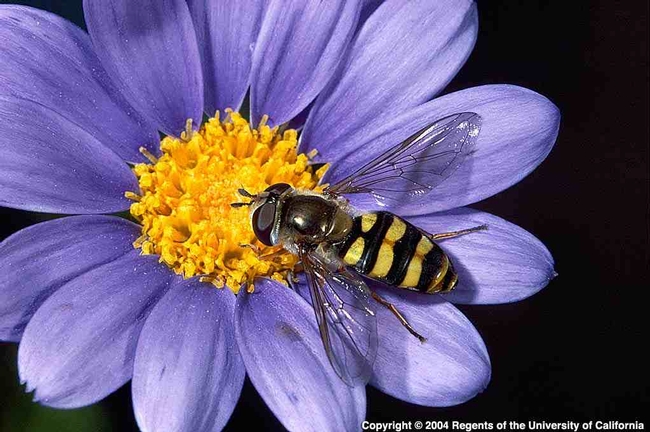Hedgerows enhance beneficial insects on farms in California’s Central Valley
Hedgerows are rows of trees, shrubs, forbs and grasses that surround farm fields. They may be remnants of existing vegetation from cleared lands, a result of natural plant dispersal, or established via direct plantings.
They’ve been in existence for thousands of years with many benefits including serving as wind breaks, helping to reduce soil erosion, and providing habitat for wildlife. All of this helps protect our water and air quality as well as enhances biodiversity.
More recently, studies have shown that hedgerows of California native flowering shrubs planted on field crop edges can enhance beneficial insect activity on farms, possibly leading to biological pest control in adjacent crops. This valuable ecosystem service could lead to reduced insecticide use on farms, possibly enhancing environmental and worker health and safety issues and provide cost savings to growers. for thousands of years with many benefits including serving as wind breaks, helping to reduce soil erosion and providing habitat for wildlife. All of this helps protect our water and air quality as well as enhance biodiversity.
In a study published in the 2011 October-December edition of California Agriculture by Morandin et al., plantings of elderberry, toyon, coffeeberry, coyote brush, California buckwheat and California lilac on field crop edges attracted significant numbers of beneficial insects. Lacewings, ladybugs, parasitic wasps and syrphid flies, all important natural enemies of crop pests, appeared. Most beneficial insects were found on the plants during bloom, with the floral resources providing many adults the needed nectar and pollen to help them survive and reproduce. Although some pests were found in the hedgerows, nearly 80 percent of the total insects found were natural enemies.
In contrast, an opposite trend was found for weedy field edges with more pests detected in the weeds than beneficial insects. In particular, weeds such as mustard, malva and wild radish are hosts to pests such as cucumber beetles, flea beetles, lygus and stinkbugs that can cause significant crop losses. Replacing this weedy vegetation with managed vegetation such as California flowering shrubs and native perennial bunch grasses will help rid farms of hosts that enhance pest numbers while at the same time increase beneficial insect activity.
The extent to which enhanced pest control occurs in adjacent crops is still under investigation. However, research to date shows that hedgerows aren’t concentrating beneficial insects; instead they’re actually exporting them into adjacent crops. That is, higher numbers of beneficial insects have been found in crops adjacent to hedgerows of flowering shrubs than weedy field edges. Data are still being collected on impacts to pest control.
The enhanced biodiversity and potential ecosystem service benefits of hedgerows have prompted the USDA Natural Resource Conservation Service to support growers in planting native shrubs and perennial grasses on their farms. In 2009, 13 miles of hedgerows were established on California farms compared to 3 miles in 2005, so interest is growing. In particular, planting California native flowering shrubs and forbs for attracting native bee pollinators for enhanced pollination in adjacent crops is gaining significant attention. Recently the USDA approved 90 percent cost-share programs for pollinator hedgerows.
More information on plant selection, establishment practices and costs for planting hedgerows on farms can be found in UC ANR publication number 8390, available as a PDF or e-book: Establishing hedgerows on farms in California.






http://anrcatalog.ucdavis.edu/Items/8390.aspx
Posted by Brenda Dawson on November 28, 2011 at 11:10 AM